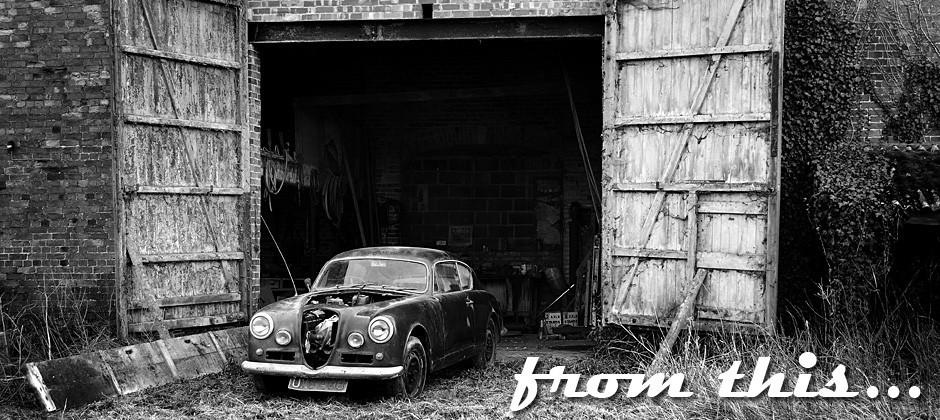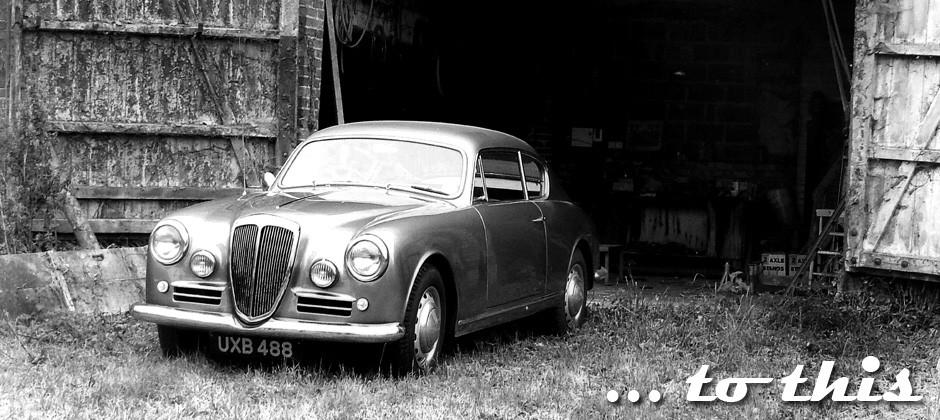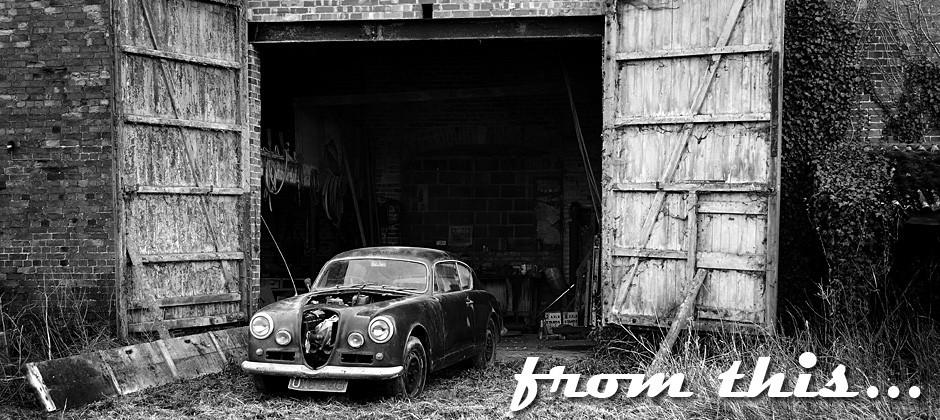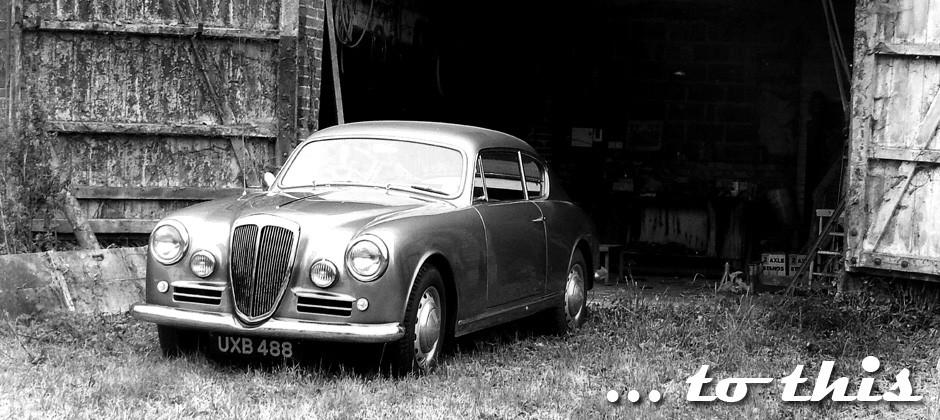Restorations
Restorations
Omicron Engineering has been restoring classic cars since we started in the early 1980’s.
The theory is simple – to strip down, repair and rebuild a car to a condition at least comparable to which it left the factory when new.
The reality is often significantly more complicated, as you often encounter unexpected problems or setbacks such as poor previous repairs, or misguided attempts to improve the car at some point in the cars history, which may need to be undone during the course of the rebuild.
During the restoration, every aspect of the car will receive attention.
The body will be stripped of paints and primers, back to bare metal, to which repairs are made – cutting and grinding out rust, fabricating replacement panels as required, before refitting, surfacing, priming, painting and polishing. If the body has a separate chassis, then this receives similar treatment. We are used to working with both steel and aluminium, but also have experience of fibreglass, carbon fibre as well as wooden frames.
Exterior brightwork may need repairs and either polishing or chrome plating. Chromed items may require de-chroming, building up with copper to add thickness and finally polishing and plating.
Engines and gearboxes are stripped down and rebuilt as necessary.
Brake systems are fully stripped down and rebuilt, with new hydraulic seals, refurbished or replacement cylinders, new brake pipes and hoses and new brake linings.
The suspension and steering is also fully inspected, cleaned and refinished, with new bushes, seals, ball joints, springs and other components either overhauled or replaced as is necessary. Once the suspension and steering is finished, these can be re-fitted to the body or chassis, and put back on the ground, on refurbished wheels or on temporary slave wheels.
The electrical system is also considered, the loom is carefully checked, and either repaired or used as a pattern to make a new one. All electrical systems are checked, dynamos, alternators and starter motors are overhauled. Lamps may need overhauling, which may mean opening the headlamps and refurbishing the reflectors.
The interior trim is one of the last things to be refitted – carpets, mats and sound deadening underfelts need to be replaced. Seat coverings may require repair or replacement in either cloth, vinyl or leather, and its possible the seat frame, the seat foam and springs underneath may require attention. New door cards may need to be cut and covered, and the headlining may require replacing, and dashboard coaming and crash pads may need recovering. Convertible cars may require a new hood making as well and getting this tensioned properly can be a difficult job.
Some people consider a restoration to be over when they have run out of bits to re-fit, but the truth is that there is another stage after this. The car needs extensive test driving to make sure everything is working properly and to improve the car through adjustment and fine tuning, and the car needs to be tested on longer journeys and in heavy traffic to make sure that it can cope with stop-start traffic, and that the electrical system can cope with running full lights and windscreen wipers and heater fan at the same time.
These individual processes do not always happen one after the other. Whilst the body is being worked on, the engine and mechanical parts will be worked on, the upholstery will be in the queue for the trimmer, and parts will be sent away for specialist processes that are not done in house.




